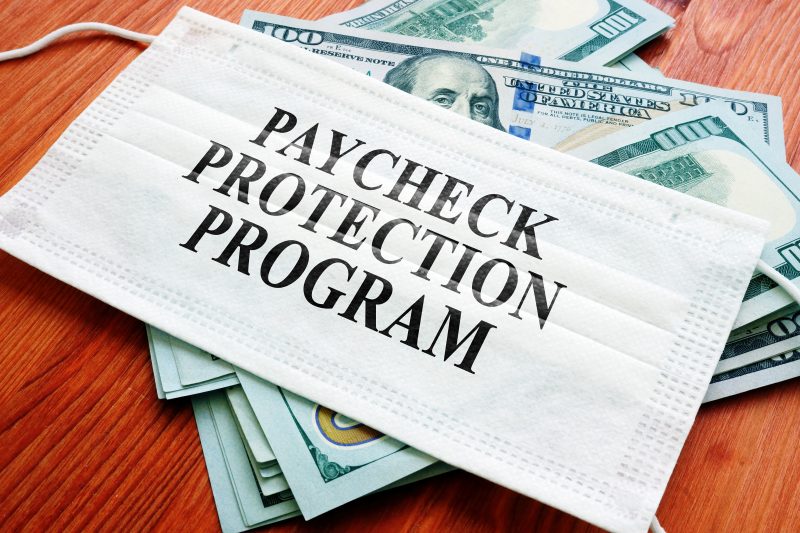Small businesses can start getting ready for the new round of Paycheck Protection Program loans. The PPP is returning, thanks to the recently passed coronavirus stimulus package by Congress, and it is available to businesses that already received a PPP loan. For struggling small businesses, a second round of loan money could make the difference between survival and closing up shop.
There are additional relief measures in the stimuls legislation that was passed by Congress and awaits the president’s signature. The stimulus also provides $20 billion for advances, or grants, as part of the SBA’s EIDL, or Economic Injury Disaster Loan Program.
Let’s start with the lowdown on the new round of PPP – some are calling it PPP 2.0. In the first round in Florida, $30 billion in PPP funds were granted to small businesses, with at least $12.2 billion of those funds going to businesses in Miami-Dade, Broward and Palm Beach counties.
Here are some of the highlights and more details will be coming out in the next week or two.
Paycheck Protection Program
The basics: There will be some changes, and the Small Business Administration has not rolled out the program yet – that may take a week or longer. But here is what we know about the program right now.
The $900 bill stimulus package includes $284 billion for the PPP, which closed in August. Like the first time when the PPP was funded under the CARES Act, the new stimulus relief will be forgivable loans for small businesses and some nonprofits, self-employed and contractors.
This time around, small businesses can apply even if they have already received a loan, and allowable forgivable expenses have been tweaked.
What’s more, small business owners who receive PPP loans — whether in the last round or the next round — can deduct the expenses for which they use loan money on their taxes.
Eligibility: Existing PPP borrowers that have 300 or fewer employees and have experienced at least a 25% drop in gross receipts in at least one 2020 quarter may apply for a second loan, as long as the first loan has been used up. The eligibility requirements did not change for first timers.
How much: Loans are capped at up to $2 million; that’s down from $10 million in the first round. Similar to the last PPP program, loan amounts are based on payroll, calculated at 2.5 times average monthly payroll costs. Worth noting: the loan amounts are based on 3.5 times average monthly payroll costs for small businesses in the hard-hit accommodation and food service industries.
Where to apply: No changes. The program is administered by the SBA and small businesses apply through partnering banks, community lenders, credit unions and other financial entities.
Forgiveness: Remains about the same: 60% of funds must be spent on payroll while 40% can go for costs such as mortgage expenses, rent and utility payments, but new in the law is that new eligible expenses can also include operations, property damage costs, supplier costs, and worker-protection expenditures. The new legislation also clarifies that tax deductions can be taken.
Access: The new legislation allocates $15 billion each to community lenders, such as CDFIs, and small depository lenders to issue loans in order to increase PPP access in minority communities. A portion of PPP funding is also earmarked for businesses with 10 or fewer employees and loans of less than $250,000 in low-income areas. There is also a simplified process – a one-pager – for forgiveness for loans under $150,000.
EIDL Grants
The stimulus legislation also provides $20 billion for advances, or grants, for qualifying applicants to the SBA’s Economic Injury Disaster Loan Program. In the first round, some qualifying small businesses didn’t receive the full grant amount or were denied because money ran out. Small businesses that received less than the $10,000 could now receive the difference under the new legislation.
There are some other changes, such as one that means that small businesses will not see their cash advance amount deducted from their PPP loan forgiveness. Another change is EIDL advances will no longer be considered taxable income, something that had also reduced the value of the grants.
The EIDL loan program has continued to be open for applications. The EIDL loan and grant program will now expire Dec. 31, 2021. Unlike the PPP, EIDL loans are not forgivable. The loans of up to 30 years carry an interest rate of 3.75%.
Additionally, the stimulus legislation provides $15 billion for the SBA to make grants to hard-hit live venue operators, such as theaters and live performing arts organizations. It also extends a provision that pays the principal and interest on behalf of borrowers that have certain SBA loans, such as 7(a) loans, the agency’s flagship loan offering. It also provides support for the 7(a) program by increasing the amount of the SBA’s guarantee for lenders.

